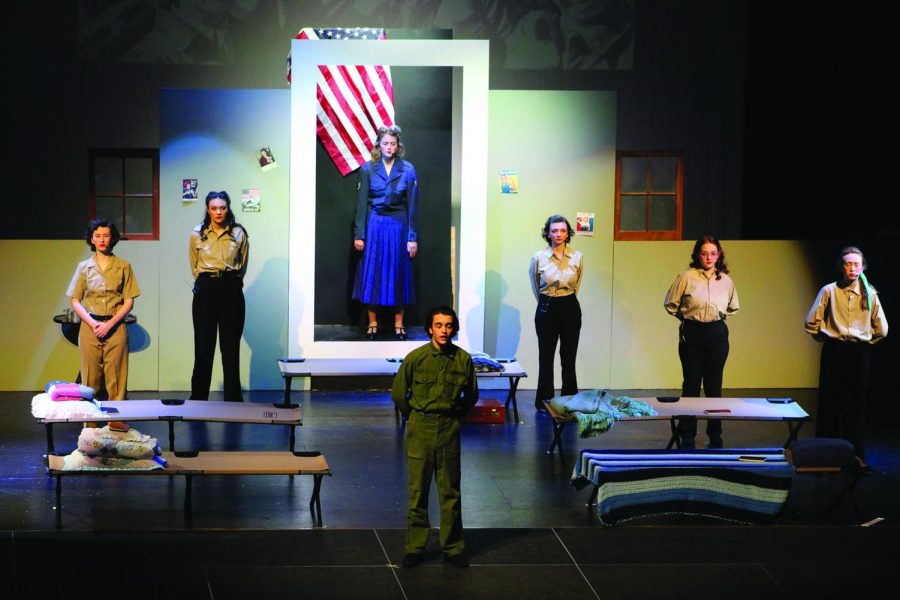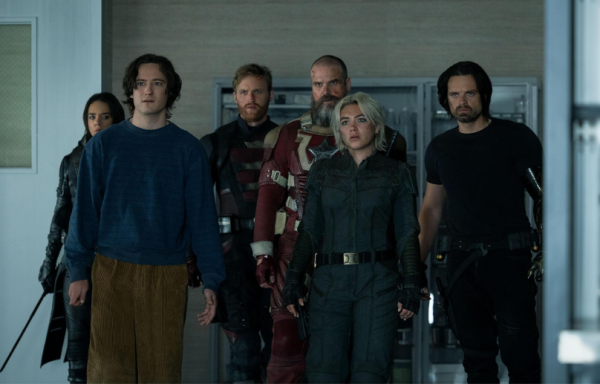Silver Wings on Blue captures history of WASPs during WWII
Drama Club performs Silver Wings on Blue in November.
The LHS Drama Club’s recent production of Silver Wings on Blue successfully captured the history and experience of the women involved in the Women’s Air Force Service Pilots (WASPs). Under the play’s director, Mel Syverson, Ariana Burns’ script revealed some of the struggles and challenges women faced to become pilots in the military during World War II.
The play begins by recounting the history of some of the women involved in the WASPs program and introduces a WASPs graduate, played by Kate Pernsteiner, who sings about the pilots throughout the story. It then flashes back to a pilot named Jacqueline “Jackie” Cochran (Rachel Sheppard) successfully persuading General “Hap” Arnold (Lane Riggs) to allow women to pilot airplanes for the military in a new program called the WASPs.
The next scene introduces women joining the new WASPs program and the challenges they face. To meet the requirements to fly, Captain Garret (Dekin Carney) and an instructor (Piper Rickman) teach them about aviation.
Shortly after meeting the flight requirements, pilot Ellen “Stevie” Stevenson (Lauren Gibbs) dies in a plane crash. As Minkie Campbell (Dax Alexander) helps with Stevenson’s funeral preparations, she learns that she and other pilots do not have military status after their death. Grace Task (Madeline Gibson) also discovers that the pilots do not have military coverage for medical issues after she has dental problems.
It then becomes the pilots’ biggest struggle to try to convince the government to militarize the WASPs program to gain military status and benefits.
At the play’s resolution, the pilots prepare for the possible militarization of the WASPs program, but Congress ultimately turns down the bill.
Overall, Silver Wings on Blue presents an interesting take on a rarely-covered topic. The mid-paced plot successfully captures the history of the pilots and the WASPs without feeling rushed or too slow. The use of historical facts adds to the dialogue and the story. Further, the set designs brought the right setting to the play, successfully matching the tone and topic of the piece.
Although the play might not capture the attention of every audience member, with some conflicts told rather than shown, the play deserves a 4/5 for its creative portrayal of history.






